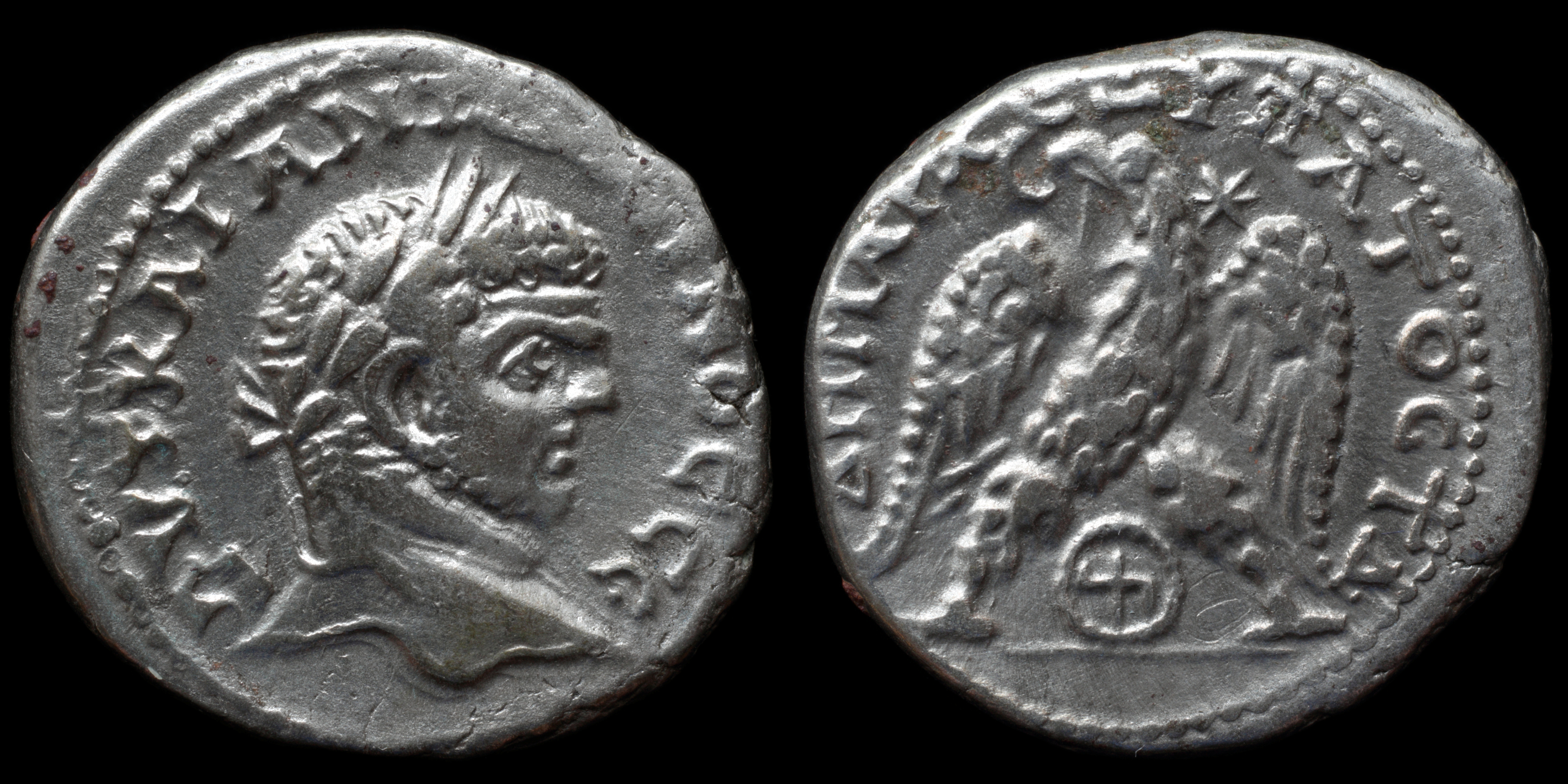Gaza's history of habitation dates back 5,000 years, making it one of the oldest cities in the world. Gaza achieved relative independence and prosperity under the Persian Empire. It resisted Alexander III's siege for five months. The inhabitants were either killed or taken captive, New settlers build Gaza according to greek model.
It experienced another siege in 96 BC by the Hasmonean king Alexander Jannaeus who "utterly overthrew" the city, killing 500 senators who had fled into the temple of Apollo for safety. Josephus notes that Gaza was resettled under the rule of Herod Antipas and rebuilt after it was incorporated into the Roman Empire in 63 BC. It was partially destroyed by Jewish forces in 66 AD.
Mem character depicted on the coins of Gaza, stands for Marnas (Aramaic Marnā the "Lord"), the great god of Gaza. He was regarded as the god of rain and grain and invoked against famine. He was identified at Gaza with Cretan Zeus, Zeus Krētagenēs. It is likely that Marnas was the Hellenistic expression of Dagon, old Mesopotamian and Caananite deity. His temple, the Marneion, depicted on some of the Hadrian's coins, was the last surviving great cult center of paganism until it was burned by order of the Roman emperor during the Persecution of pagans in 402.
It experienced another siege in 96 BC by the Hasmonean king Alexander Jannaeus who "utterly overthrew" the city, killing 500 senators who had fled into the temple of Apollo for safety. Josephus notes that Gaza was resettled under the rule of Herod Antipas and rebuilt after it was incorporated into the Roman Empire in 63 BC. It was partially destroyed by Jewish forces in 66 AD.
Mem character depicted on the coins of Gaza, stands for Marnas (Aramaic Marnā the "Lord"), the great god of Gaza. He was regarded as the god of rain and grain and invoked against famine. He was identified at Gaza with Cretan Zeus, Zeus Krētagenēs. It is likely that Marnas was the Hellenistic expression of Dagon, old Mesopotamian and Caananite deity. His temple, the Marneion, depicted on some of the Hadrian's coins, was the last surviving great cult center of paganism until it was burned by order of the Roman emperor during the Persecution of pagans in 402.
Modern location: Gaza
(1)
Caracalla

An
AR
Tetradrachm
struck 215-217 AD
in
Gaza
Obverse: Laureate head right
Reverse: Eagle standing facing, head left, with wreath in beak and wings spread; between legs, sign of Marnas in pelleted circle; star to upper right.
Diameter:
26 mm
Die Orientation: -
Weight: 12.4 g
Die Orientation: -
Weight: 12.4 g
No notes for this coin
Prieur 1686 var. (no star)
(2)
Hadrian
.jpg)
Obverse: laureate head right; A KA TR__AΔPIAN CE
Reverse: Herakles facing, head left, holding club and lion skin; ΓAZA__Δ EΠI Γ_YP / Mem
Diameter:
17 mm
Die Orientation: -
Weight: 5.1 g
Die Orientation: -
Weight: 5.1 g
No notes for this coin
Yashin 323; Rosenberger 54, BMC 49, Volume III, № 4031
